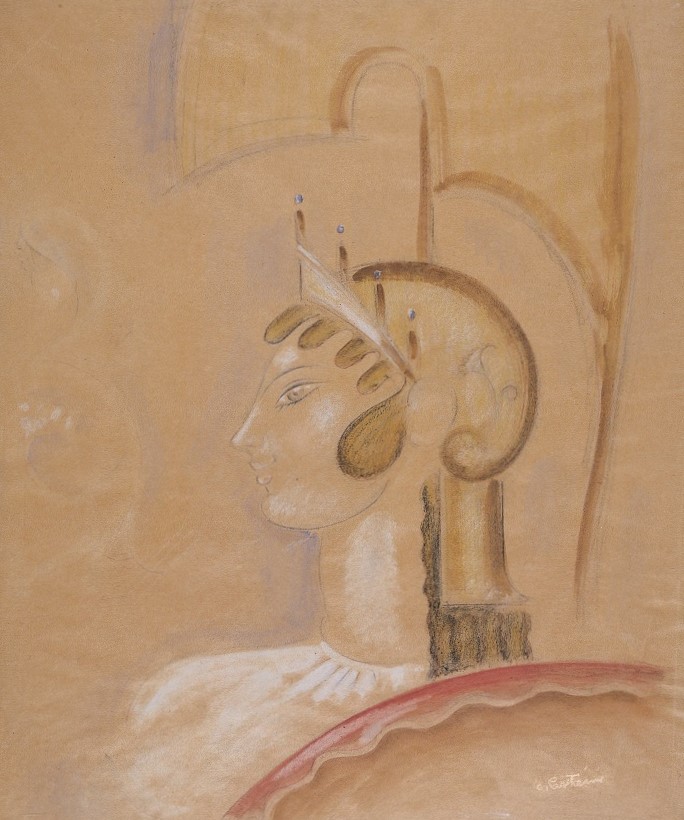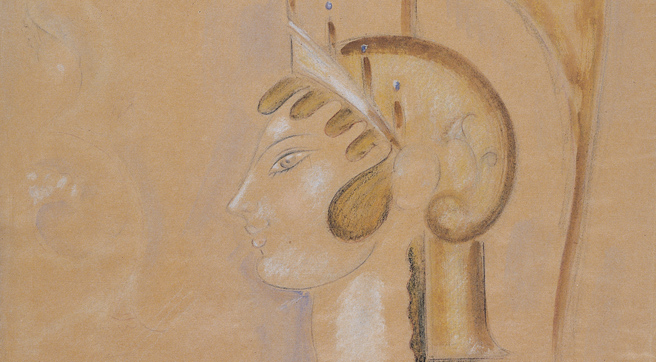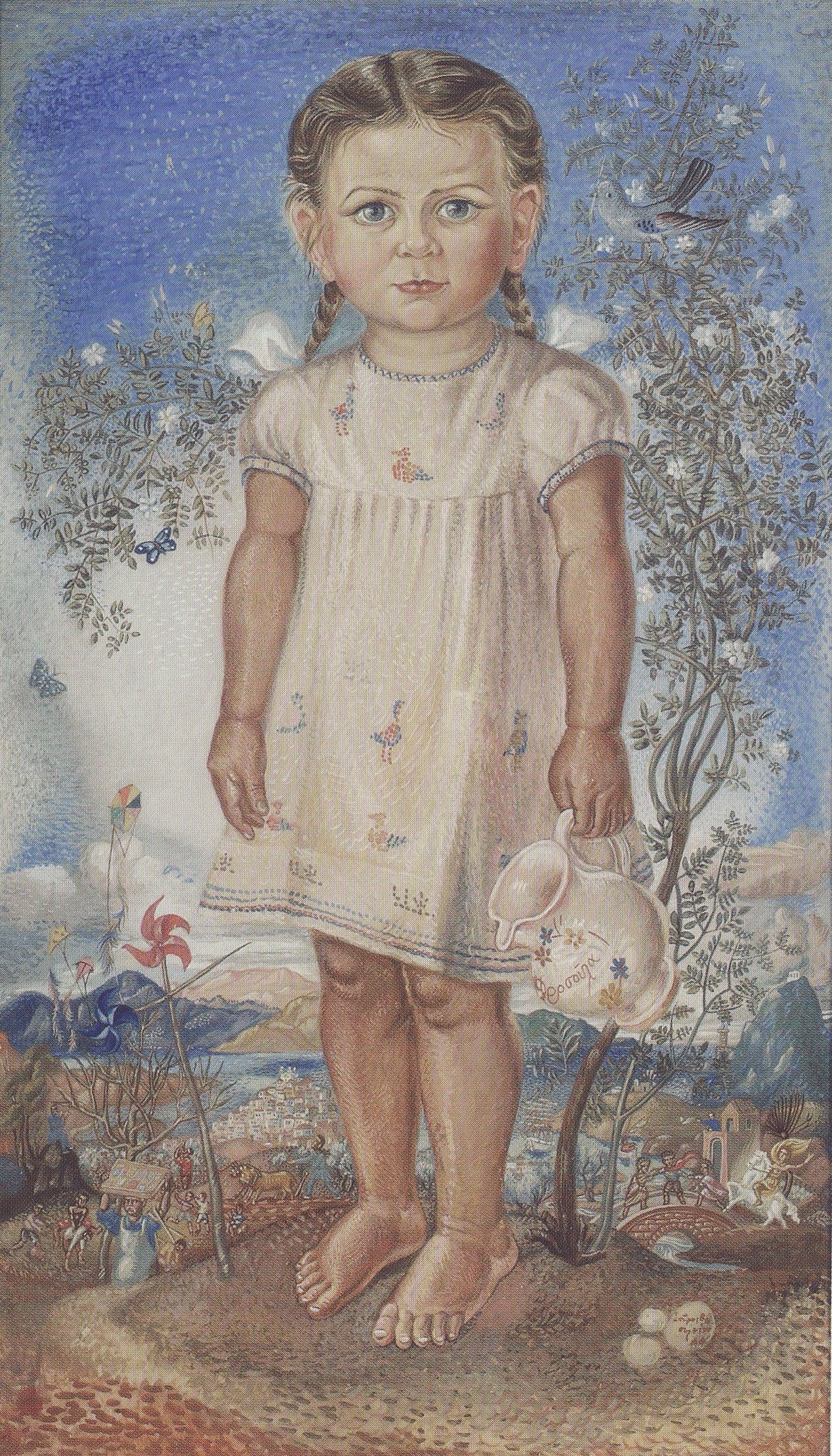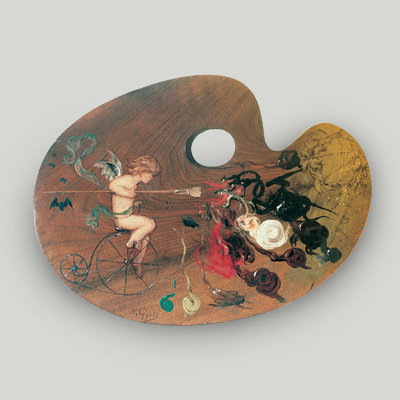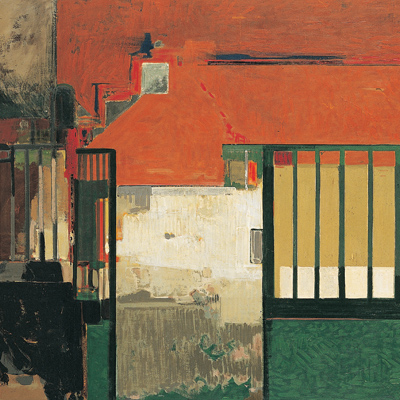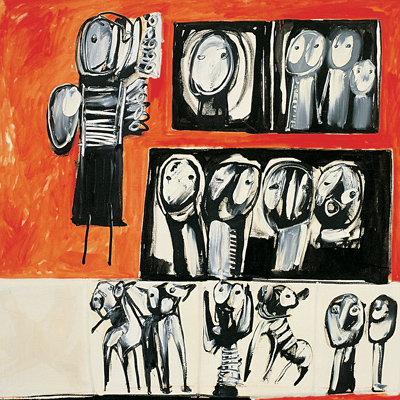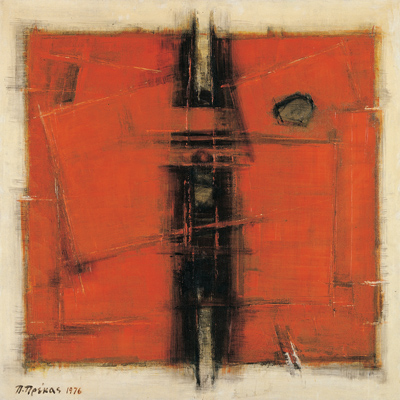Konstantinos Parthenis, Athena
Athena is a piece by Konstantinos Parthenis, one of the most iconic painters of modern-Greek art. It was a gift from the personnel of Laiki Bank to the General Manager, during the interwar period. Parthenis’ painting is typified by a purely unique form of expression. The artist boldly incorporated forms from Ancient Greek and Byzantine art, Impressionism, and symbolism.
The representation of goddess Athena
The painting depicts the upper body of goddess Athena, in an austere side view, magnificent and solemn. She is wearing her battle regalia: armour, helmet and shield.
The rendering of her figure is abstract, with a sketch-like quality. This element brings to mind similar iconographic models of Ancient Greek pottery.
A distinctive portrait
Athena features all the elements that characterise most of Parthenis’ portraits:
- Focus on the face.
- Limited colour palette.
- Undetermined space.
His life in a nutshell
Konstantinos Parthenis (1878-1967) was born in Alexandria. He studied Painting in Vienna (1895-1903) under Karl Wilhelm Diefenbach.
He came to Greece for the first time in 1903. Between 1909 and 1911 he lived in Paris. He then returned to Greece and settled in Corfu, until 1917. In that same year, he travelled to Athens where he founded the Techni (Art) Group together with other progressive artists. In 1929 he was appointed professor at the Athens School of Fine Arts, where he taught until 1948.
He died in self-imposed isolation.
Artistic influences
Parthenis was able to overcome conservative academic models. He boldly incorporated forms from Ancient Greek and Byzantine art, Impressionism, and Symbolism.
The first years of his work are typified by the strong influence of the Vienna Secession. The Vienna Secession was the Viennese version of symbolism and art nouveau. Parthenis was greatly influenced by Austrian painter Gustav Klimt.
In Paris, the artist came into contact with post-impressionists and fauvists. His work was mostly influenced by French symbolists and Les Nabis.
His more mature works show influences from Byzantine icon painters and El Greco (Domenikos Theotokopoulos).
Features of his work
Through his art, Parthenis envisioned the ideal Greece and the need to define a national identity. He formed a purely unique style, which was marked by idealism, austerity, purity and despiritualisation.
His first works have elements such as: development of the composition on the surface, high horizons without a sky, decorative shapes, pointillism and cold colours.
In his mature works the figures are depicted in the transcendental space. Time is eliminated and the visible world becomes spiritual through this technique. Pigments lose their material dimension. They become a purely spiritual projection.
A recognised artist
Parthenis is rightfully considered a prominent, if not the most important, representative of modern-Greek art. Scholars of his work have called him “one of the fathers of 20th century Greek painting, along with Maleas and Bouzianis.”
He has received numerous accolades, including:
- The Parisian Autumn Salon of 1910, where his work Slope received an award.
- The Venice Biennale (1934).
- The gold medal he won for this painting The Battle of Hercules with the Amazons, at the Paris International Exhibition in 1937.
- The representation of Greece at the Venice Biennale (1938).
- The Commander of the Order of George I, awarded to Parthenis in 1954.
- The Gold Cross of the Order of the Phoenix (1965).
Parthenis’ close ties with Laiki Bank
Parthenis was a friend of art enthusiast brothers Dionysios and Spyridon Loverdos. The 2 brothers were bankers and founders of Laiki Bank, one of the banks forming Alpha Bank today.
In fact, Athena, also known by the title Blonde Athena, was a gift by the personnel of Laiki Bank to the General Manager, in April 1931. There is a relevant note at the back of the painting.
The work of art in our publications
Athena by Konstantinos Parthenis is referenced in the Alpha Bank publications:
- The Alpha Bank Collection. Paintings – Prints – Sculptures, edited by Irene Orati. The publication marks the 125th anniversary of Alpha Bank.
Buy the publication The Alpha Bank Collection. Paintings – Prints – Sculpture (only available in Greek) on the Alpha Bank e-shop. - The Alpha Bank Collection. Greek Art from 1920 until Today, edited by Irene Orati. The publication accompanied the Art Collection’s exhibition at the Macedonian Museum of Contemporary Art in Thessaloniki.
Buy the publication The Alpha Bank Collection. Greek Art from 1920 until Today on the Alpha Bank e-shop.
In other literature
Athena by Konstantinos Parthenis is referenced in the book K. Parthenis. The Life and Work of Kostis Parthenis by E.D. Mathiopoulos (in Greek).
The Alpha Bank Art Collection is not open to the public.
Research visits to the Art Collection can be organised upon request.
Contact us to book your visit.
